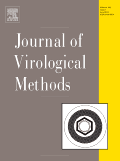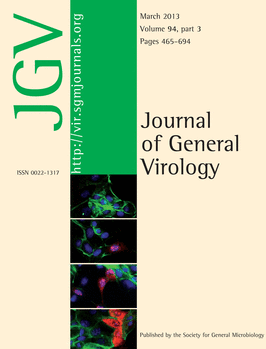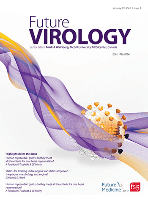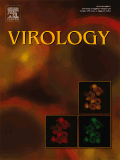
JOURNAL OF VIROLOGICAL METHODS
Scope & Guideline
Fostering collaboration for breakthroughs in virology.
Introduction
Aims and Scopes
- Development of Diagnostic Methods:
The journal consistently publishes articles focused on the development and validation of various diagnostic methodologies, including PCR, ELISA, LAMP, and next-generation sequencing techniques for the detection of viral pathogens. - Viral Detection and Quantification:
A core area of interest is the quantification of viral loads in clinical and environmental samples, employing techniques like qPCR, digital PCR, and other molecular methods to assess viral presence and concentration. - Innovative Analytical Techniques:
The journal showcases research that employs novel analytical techniques, such as CRISPR-based diagnostics, nanopore sequencing, and high-throughput screening assays, aimed at enhancing the sensitivity and specificity of viral detection. - Viral Pathogenesis and Immunology:
Research articles often explore the mechanisms of viral pathogenesis and immune responses to infections, contributing to the understanding of disease processes and the development of therapeutic strategies. - Viral Characterization and Genomics:
There is a significant focus on the genomic characterization of viruses, including studies on viral evolution, strain differentiation, and the impact of genetic mutations on viral behavior and treatment efficacy. - Environmental Virology:
The journal includes studies on the detection and analysis of viruses in environmental samples, particularly related to wastewater surveillance and the implications for public health.
Trending and Emerging
- CRISPR and Gene Editing Technologies:
There is a notable increase in the use of CRISPR-based methodologies for viral detection and characterization, highlighting the technology's potential for precise diagnostics and therapeutic applications. - Environmental Surveillance for Viral Pathogens:
Research focusing on the detection of viruses in environmental samples, particularly wastewater, has gained momentum, reflecting growing public health concerns regarding zoonotic and waterborne viruses. - Multiplex and High-Throughput Assays:
The development of multiplex assays that allow simultaneous detection of multiple viruses is trending, catering to the need for efficient diagnostics, especially in the context of co-infections. - Viral Genomic Epidemiology:
Emerging interest in the genomic epidemiology of viruses, particularly in understanding mutations and variants, has increased, especially in light of the COVID-19 pandemic and ongoing viral outbreaks. - Point-of-Care Testing Innovations:
A rising trend in the journal is the development of point-of-care testing technologies, which aim to provide rapid and accessible viral diagnostics in clinical and field settings. - Vaccine Development and Immunogenicity Studies:
Research related to vaccine development, including the assessment of immunogenic responses to viral infections and the evaluation of vaccine candidates, is increasingly featured, driven by the urgency of global health challenges.
Declining or Waning
- Traditional Virus Culture Techniques:
Research focused purely on traditional virus culture methods has decreased, as the field shifts towards more rapid and sensitive molecular techniques for viral detection. - General Virology Studies:
There is a waning interest in broad, non-specific virology studies that do not employ innovative methodologies or focus on specific viral pathogens. The trend indicates a preference for targeted research that offers practical applications. - Non-Molecular Diagnostic Techniques:
The use of older non-molecular diagnostic methods, such as serological assays without accompanying molecular validation, has seen reduced emphasis, as newer, more efficient techniques gain traction.
Similar Journals

Journal of Clinical Virology Plus
Transforming clinical virology through open-access research.The Journal of Clinical Virology Plus, published by Elsevier, is an essential resource for researchers and professionals in the fields of virology and infectious diseases. Launched in 2021, this journal aims to bridge the gap between clinical research and application, fostering a deeper understanding of viral pathogenesis, diagnostics, and therapeutic strategies. With an ISSN of 2667-0380, this open-access journal brings cutting-edge findings to the global scientific community, facilitating the rapid dissemination of knowledge critical for advancing public health. Positioned in the Q3 category for both Infectious Diseases and Virology in 2023, its ranking reflects its growing influence and relevance in the academic landscape. The journal strives to support innovative research, collaborative studies, and comprehensive reviews that address contemporary challenges in clinical virology. As it converges through the years from 2021 to 2024, Journal of Clinical Virology Plus aims to be a central hub for vital discussions and breakthroughs in this dynamic field.

JOURNAL OF GENERAL VIROLOGY
Connecting researchers to the latest virology advancements.The JOURNAL OF GENERAL VIROLOGY, published by the Microbiology Society, is a premier academic journal dedicated to advancing the field of virology. Established in 1967, this influential journal covers a wide spectrum of research from basic virology to applied studies, serving as a vital resource for researchers, professionals, and students alike. With its ISSN 0022-1317 and E-ISSN 1465-2099, the journal is recognized for its rigorous peer-review process and high-quality publications, attaining a commendable Q2 ranking in the Virology category for 2023. The journal's focus on disseminating innovative findings and fostering critical discussions contributes significantly to the understanding of viral mechanisms, disease processes, and potential therapeutic strategies. Although it does not currently offer Open Access options, the journal remains accessible to the academic community, with a strong commitment to supporting virology research globally. As part of Scopus' top-tier rankings, illustrating its impact within the category of Immunology and Microbiology, the JOURNAL OF GENERAL VIROLOGY continues to play a pivotal role in shaping the future of virological science.

AVIAN PATHOLOGY
Exploring the intricacies of avian diseases and diagnostics.AVIAN PATHOLOGY is a leading academic journal published by Taylor & Francis Ltd, focusing on the field of avian health, diseases, and diagnostics. With an ISSN of 0307-9457 and an E-ISSN of 1465-3338, this esteemed journal has been serving the scientific community since its inception in 1972, with content converging until 2024. Notably recognized in the 2023 Journal Rank, it holds a Q1 category in Animal Science and Zoology, making it an essential source for researchers and practitioners alike. The journal emphasizes critical insights into avian pathology, fostering significant advancements in veterinary science and poultry health management. Although it is not open access, subscriptions provide access to high-impact reviews and original research that underpin vital practices in the industry. With its prestigious publishing lineage and impactful scope, AVIAN PATHOLOGY continues to be a cornerstone for those dedicated to understanding and improving the health of avian species worldwide.

Journal of Virus Eradication
Advancing the fight against viral threats.Welcome to the Journal of Virus Eradication, a premier publication dedicated to advancing the field of virology and infectious disease research. Published by MEDISCRIPT LTD, this journal provides a vital platform for sharing cutting-edge research findings in key areas including epidemiology, immunology, and public health. With an impressive classification of Q2 in Epidemiology and Infectious Diseases for 2023, this journal exemplifies a commitment to high-quality scholarship and impactful research. The Journal of Virus Eradication is instrumental in disseminating knowledge that tackles viral threats, contributing to global health initiatives aimed at virus containment and eradication. Researchers, professionals, and students alike will find this journal an invaluable resource, making significant contributions to the scientific community and society at large.

VIRUS GENES
Connecting Science and Health Through Viral GeneticsVIRUS GENES is an esteemed journal published by Springer, dedicated to advancing our understanding of virology and its related fields, including genetics, molecular biology, and immunology. With a publication history that spans from 1987 to 2024, this journal provides researchers and professionals with a platform to disseminate high-quality, peer-reviewed articles that explore the intricacies of viral genetics and their implications in health and disease. With an impact factor placing it in the Q3 quartile across multiple categories in 2023, including Genetics and Virology, VIRUS GENES serves as a crucial resource for academics seeking to stay at the forefront of viral research. Its commitment to showcasing innovative research makes it an invaluable asset for students and professionals aiming to deepen their knowledge in the rapidly evolving landscape of virology. Although currently not offering Open Access, the journal ensures wide accessibility through institutional subscriptions, thereby playing a vital role in the collaboration between scientists globally.

Future Virology
Innovating Solutions for Global Health ChallengesFuture Virology, published by Future Medicine Ltd, is an essential journal dedicated to advancing the understanding of virology in the contemporary scientific landscape. With an ISSN of 1746-0794 and an E-ISSN of 1746-0808, this journal serves as a platform for researchers and practitioners in the field to publish high-quality, peer-reviewed articles that explore novel discoveries, innovative therapeutic strategies, and the implications of viral research on global health. Operating from the United Kingdom and maintaining a commitment to rigorous scientific inquiry, Future Virology is categorized in the Q4 Quartile for Virology according to the latest Scopus rankings, with a position of Rank #48/80 and a percentile of 40th in the Virology category. Although it currently does not offer open access, the journal strives to disseminate critical insights that benefit a wide range of professionals, researchers, and students engaged in virology and related fields. By bridging the gap between basic research and practical applications, Future Virology plays a crucial role in fostering innovation and collaboration in the ever-evolving virology landscape.

Annual Review of Virology
Exploring the forefront of viral research.Annual Review of Virology is a premier scholarly journal published by Annual Reviews, dedicated to advancing the field of virology through comprehensive and insightful reviews. Since its inception in 2014, this journal has established itself as a leading resource for researchers, professionals, and students alike, achieving an impressive Q1 ranking in the field of Virology and a Scopus rank of #10 out of 80 in its category, placing it in the 88th percentile. The journal features in-depth analyses of the latest developments in virology, encompassing various aspects such as viral pathogenesis, host interactions, and antiviral strategies, thereby catering to a diverse audience seeking the most relevant and cutting-edge information. Although it is not Open Access, Annual Review of Virology remains an indispensable tool for those engaged in virology research, transforming complex findings into accessible knowledge that shapes future investigations and practical applications in the field.

Virus Evolution
Connecting researchers to the forefront of virus science.Virus Evolution is a premier open access journal published by Oxford University Press, dedicated to advancing the understanding of viral dynamics and evolutionary trends. Established in 2015, it has quickly ascended to a leading position in the fields of Microbiology and Virology, achieving a remarkable Q1 ranking in both categories for 2023. With its impactful research output, it ranks #27 out of 182 in Microbiology and #15 out of 80 in Virology, placing it in the top percentiles of the Scopus rankings. The journal serves as a vital resource for researchers, professionals, and students, providing a platform for the dissemination of innovative research that explores the genetic and ecological aspects of viruses. By embracing an open access model, Virus Evolution ensures that its high-quality content is accessible to a global audience, fostering collaboration and enhancing the impact of virology research worldwide.

Tumour Virus Research
Unraveling viral mysteries in tumorigenesis.Tumour Virus Research, an esteemed journal published by Elsevier, serves as a vital resource in the fields of cancer research, infectious diseases, and virology. With an impact factor reflective of its influence and recognized as a Q2 journal in multiple categories as of 2023, it rigorously presents high-impact research dedicated to the understanding of viral pathogens in tumorigenesis. Since its transition to an Open Access model in 2021, the journal has enhanced accessibility, empowering researchers and the academic community globally to explore cutting-edge findings. The journal covers a broad scope, encompassing the intricate interactions between viruses and cancer biology, which is crucial for developing novel therapeutic strategies. With a commitment to advancing scientific knowledge, Tumour Virus Research welcomes submissions that push the boundaries of current understanding and contribute to the ongoing battle against virus-mediated cancers, making it an indispensable publication for professionals, researchers, and students in the field.

VIROLOGY
Exploring the Frontiers of Viral ScienceVirology, published by Academic Press Inc. Elsevier Science, is a prominent journal dedicated to advancing the knowledge and understanding of viral biology and pathogenesis since its inception in 1955. With a distinguished impact factor and recognized as a Q2 journal in the field of Virology for 2023, it ranks 38 out of 80 in the Scopus database for Immunology and Microbiology, placing it in the 53rd percentile among similar publications. This esteemed journal provides a platform for groundbreaking research, critical reviews, and comprehensive studies that contribute to our global understanding of viruses and their impact on health and disease. Although currently not an open-access journal, it remains accessible to a wide audience of researchers, professionals, and students who are keen to explore the latest advancements in virological research. The journal's scope encompasses a diverse range of topics, ensuring that it serves as an essential resource for anyone engaged in virology and related biomedical fields.